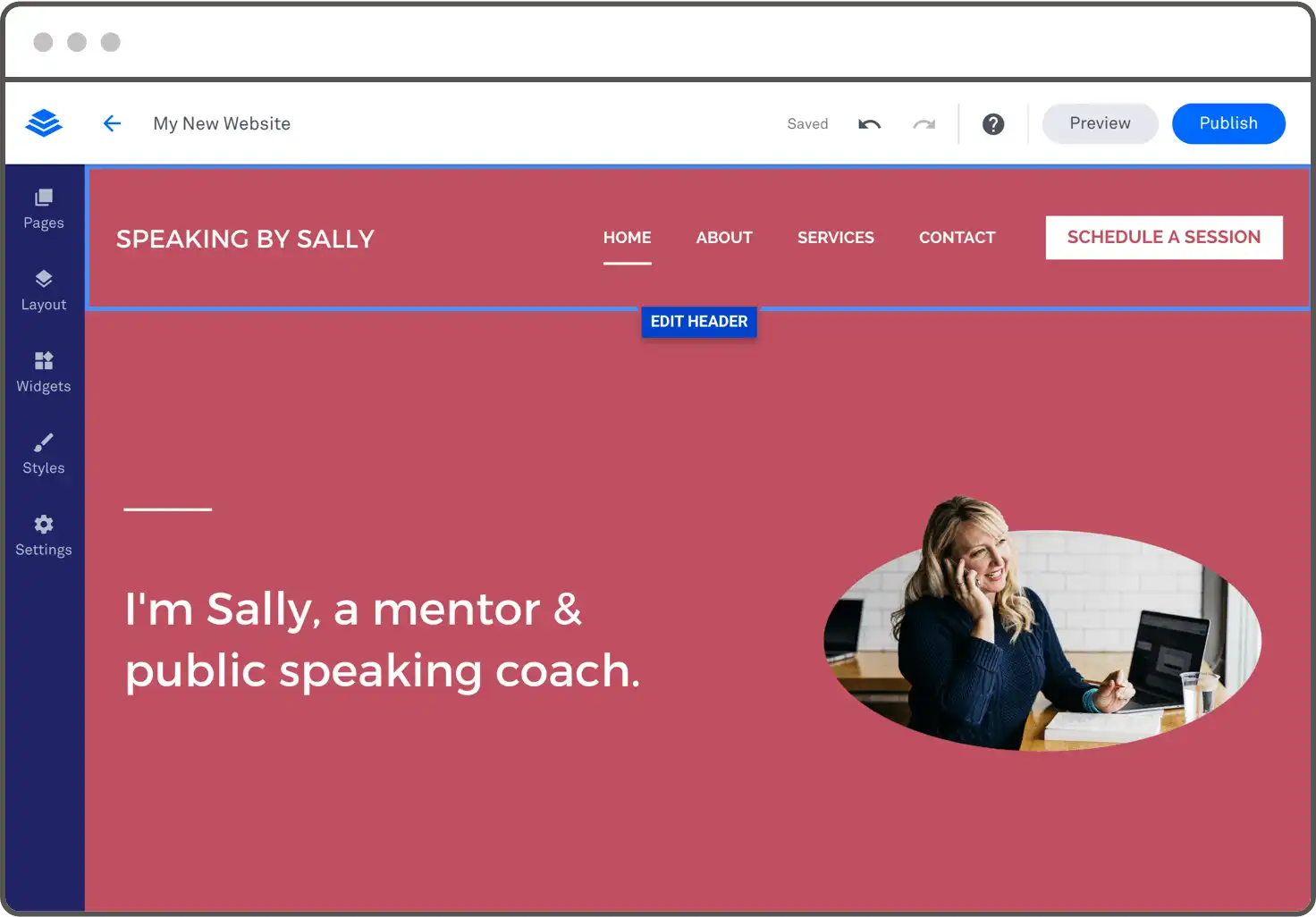The barrier to entry for launching startups has never been lower. For example, Lean Startup provides a framework for minimizing startup risk while no-code solutions make it easy for non-technical co-founders to build MVPs. But, in the beginning, landing pages are typically the best starting point to validate that a problem exists.
Let's look at how to validate your startup idea with a landing page and we’ll discuss some best practices to keep in mind along the way.
Landing pages are an easy way to validate a problem before investing time and money in an MVP. Share on XLanding Page vs. MVP
The Lean Startup movement popularized the idea of building landing pages to test startup ideas. For example, both Airbnb and Groupon famously began with a simple landing page. The idea is that you can quickly and inexpensively gauge interest in an idea before investing time and money in building a full-scale application.
While landing pages provide an initial gauge of interest, it's not the same as a minimum viable product (MVP). Landing pages promise to solve a user's problem, whereas an MVP actually solves the problem. As a result, landing pages can prove that a problem exists, but MVPs are necessary to prove that you can really solve the problem.
What You Need to Test an Idea
Landing pages are an excellent way to test a startup idea, bu they also require effort. Successful landing pages share several attributes and need constant fine-tuning to determine what messages resonate with visitors and generate the most conversions. The good news is that there's a well-established formula for success.
Essential landing page components include:
- Headline - Write a headline that conveys your startup's product, what it does, or what benefits it provides in a single, concise statement. For example, Basecamp's headline is "The All-In-One Toolkit for Working Remotely," and HelpScout's is "An easier, more powerful way to support your customers."
- Value Proposition - The most compelling value propositions consist of a 2-3 sentence sub-headline, a few bullet points, and a visual representation of the product or service. If you don't have a product, consider making a high-fidelity mockup that clarifies what it will look like when complete.
- Call to Action - The call to action will ultimately gauge customer demand since it signals interest or buying intent. In most cases, the call to action for a landing page is an email sign-up form with some kind of offer. Anyone who fills out the form becomes a lead to reach out to when you launch an MVP.
- Offer - Offers are essential to encourage users to take action. You might offer a free info product, early access to a beta version, or a discount when the product launches. The key is ensuring that the offer is strong enough to entice users to act on the call to action.
Of course, the best landing pages aren't static documents. When using them to test ideas, try A/B testing different headlines, value propositions, calls to action, and offers to see what resonates with visitors. These changes can help you better understand the problem space and improve conversion rates when you launch an MVP.
Best Tools to Build a Landing Page
Many startup founders lack experience with the HTML, CSS, and JavaScript needed to build landing pages from scratch. But fortunately, there are a growing number of drag-and-drop tools to create landing pages. Many of these tools also have built-in lead generation and analytics tools, making them all-in-one solutions.
Leadpages
Leadpages offers over 160 templates, built-in analytics, and A/B testing capabilities, making it one of the most popular landing page builders. With a 14-day free trial and plans starting at $37 per month, it's also a good option for budget-conscious entrepreneurs. However, the biggest drawback is its lack of customization compared to other options.

Leadpages provides an easy-to-use builder. Source: Leadpages
Unbounce
Unbounce is another popular landing page builder with over 100 templates, analytics tools, and A/B testing capabilities. Unlike Leadpages, the platform supports JavaScript and CSS for greater customization and includes dynamic keyword insertion for search marketing. However, its analytics aren't as powerful, and there are fewer template options.
Instapage
Instapage is one of the easiest landing page builders to use with ready-to-use templates, a stock image library, and easy lead generation tools. You can also collaborate with other team members with real-time editing and secure sharing capabilities. However, Instapage is the most expensive option and doesn't support a lot of customization.
Taking the Next Steps
Landing pages are an excellent way to validate that a problem exists, but MVPs are necessary to reach product-market fit. But, of course, MVPs are much harder to create than a landing page. For example, most startups require web or mobile applications with a database backend, as well as integrations with other tools and services.
The best way to plan an MVP is using a framework like Lean Canvas, which forces you to think through customer segments, their problems, revenue streams, key metrics, cost structure, and other factors. Then, by prioritizing problems and thinking through solutions, you can effectively build MVPs that actually solve user problems.
With a robust plan in hand, you'll be in an excellent position to work with a technical co-founder, no-code solutions, or third-party developers to build an MVP. If you need help developing an MVP, Sharkbyte can help build out your concept or sketch out a well-thought-out roadmap for your in-house team with optional team augmentation.
Contact us to schedule a free consultation.
The Bottom Line
Landing pages are an easy way to validate a problem before investing time and money into building an MVP. Using the components and tools we've covered, you can create effective landing pages in record time and fine-tune them to gauge interest and build an audience. Then, you'll be in a much better position when you begin developing your MVP.



